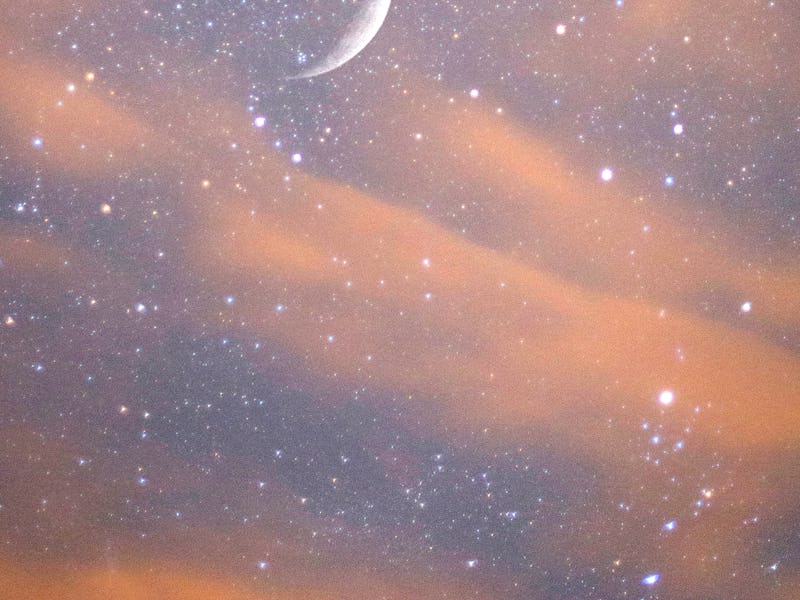How to view the best celestial objects during a New Moon
It's the perfect opportunity for a little sky gazing.

The Moon may be the main character of Earth’s night sky, but the natural satellite is barely even there at the beginning of its monthly cycle.
A New Moon takes place when the Moon is wedged between Earth and the Sun, resulting in a dark landscape that is barely visible to the naked eye. During that time, the Moon’s light does not compete with other celestial objects in the sky and makes for the perfect time for a bit of stargazing.
Here’s the Inverse guide to how to take advantage of the next New Moon.
What is a New Moon?
Over the course of its trip around Earth, the Moon moves through eight different phases, each marked by different degrees of luminosity and visibility.
Every 27 days, seven hours, and 43 minutes, the Moon completes one full orbit around Earth.
At the beginning of its cycle, the Moon is on the same side of Earth as the Sun, with its dark side facing our planet. The New Moon rises in the daytime sky around the same time as the Sun, which means it’s situated too close to the star’s glare for it to be visible.
A New Moon thus provides the perfect opportunity for looking up at objects such as stars, planets, bright galaxies, and nebulae.
The interactions between the Moon, Sun, and Earth in each phase.
What planets can you see during a New Moon?
As night begins to fall, the first two planets to shine in the sky are Mars and Jupiter.
In November, Mars will be the brightest planet in the eastern half of the sky, while Jupiter will be the brightest planet in the western half of the sky.
Meanwhile, Saturn will rise about five degrees to the east of Jupiter a few hours after sunset.
Jupiter is visible without a telescope, but a telescope will give you a more detailed look at the planet and some of its larger moons. Skywatchers can spot Saturn and Mars with the naked eye, but a telescope or a pair of binoculars reveal the worlds more fully.
What constellations can you see during a New Moon?
In late October to early November, the constellation Pisces shines bright in the Northern hemisphere.
The stars of the Pisces constellation make up a distinct V shape. It may not be the brightest constellation, but it has a large group of stars, making it ideal for New Moon viewing.
Meanwhile, over in the Southern hemisphere, the Phoenix constellation soars in the night sky.
Shaped somewhat like the bird, the constellation looks like a triangle and a lopsided quadrangle stuck together. The brightest star of the Phoenix constellation is called Ankaa, located about 85 light years away from Earth.
The Veil Nebula won’t quite show up Hubble quality like this in your telescope, but it’s still worth a look.
Unveiling a nebula
The Veil Nebula is perhaps one of the most beautiful formations in the night sky.
The nebula is located in the constellation Cygnus. It can be found just a few degrees south of the star Gienah, in the right “wing” of the swan-shaped constellation.
You can view the nebula using a small telescope with three-inch refractors. The Veil Nebula takes up a large part of the night sky, with a diameter as wide as about six full Moon.
When is the next New Moon?
The next New Moon will rise in the sky on November 4 at 9:15 p.m., and the last New Moon of the year 2021 will fall on December 4.
The New Moon of the New Year will arrive on January 2, 2022.
This article was originally published on